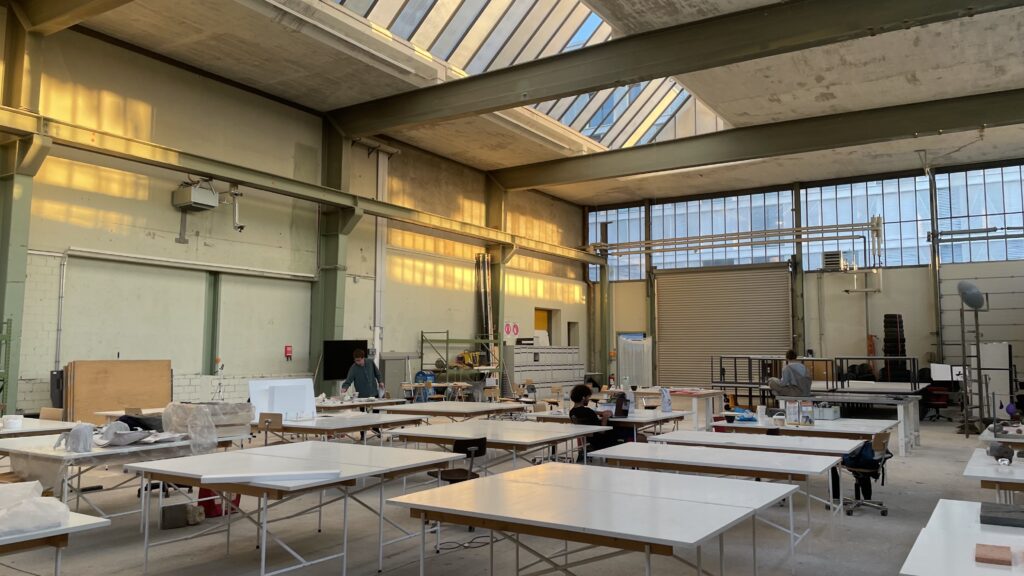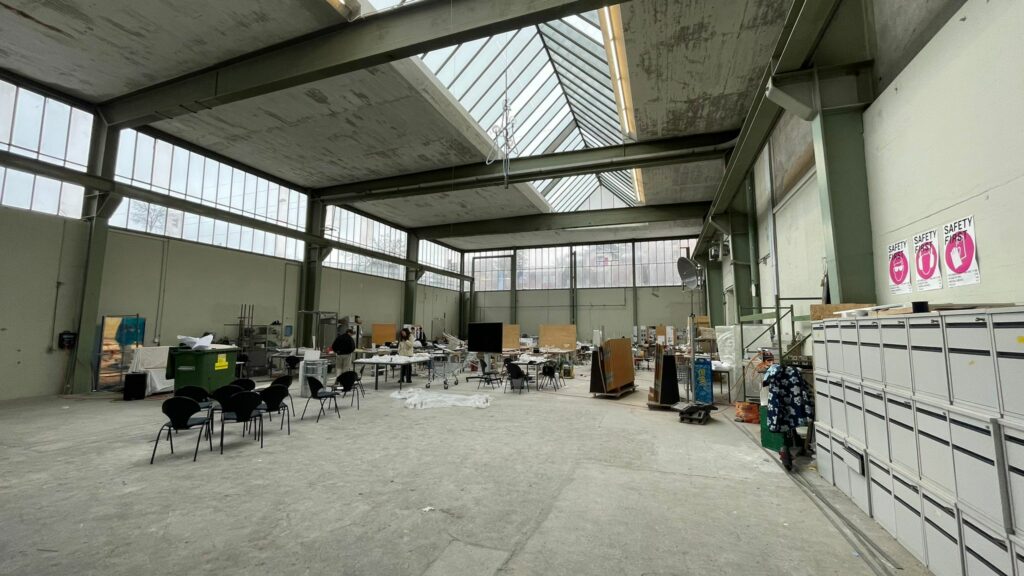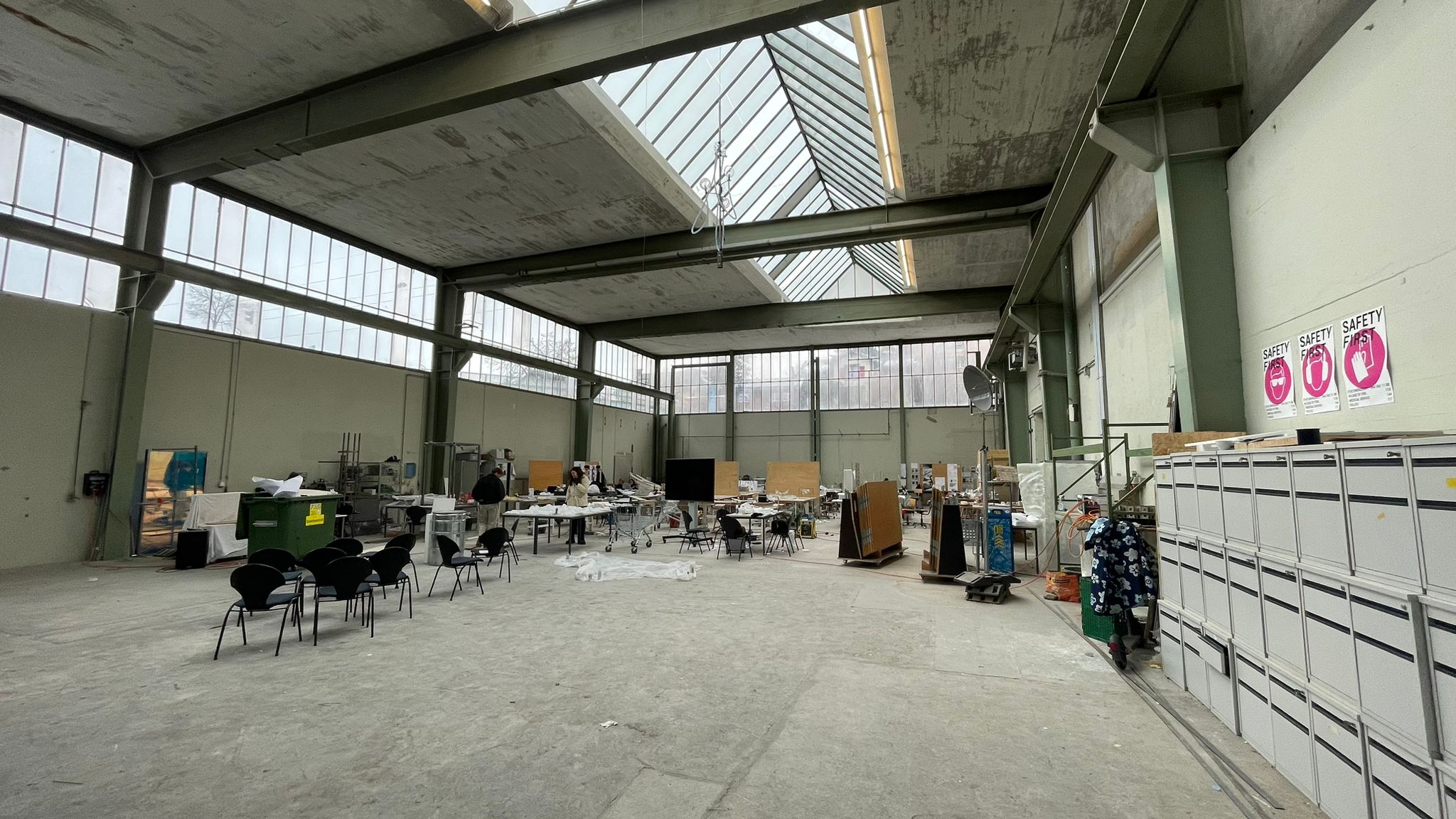ASSIGNMENT 5
Sound making
Part 1
The object chosen for this research is an angle grinder. The reason for choosing this object is to understand the power of sound that a common construction object such as an angle grinder can generate.
On construction sites, machines that produce very high decibels are used every day, and in the long run there could be auditory consequences for workers.
The object was recorded in an open space in the absence of elements that can reflect the emitted sound waves. The space features a street between two tall industrial buildings, but the width of the street itself allows for almost no reverberation of the emitted sound waves.
The Angle Grinder is a construction tool that is used to cut elements with considerable density, thanks to the application of specific blades for the job.
The sound produced is therefore a very loud sound, since the motor that turns the blade must be extremely high-performance. The noise emitted rises in decibels very quickly and no longer increases as soon as the maximum speed is reached. The peculiarity of this object is that by itself it generates a loud and constant sound but, in the moment the blade comes into contact with an item to be cut, the sound increases in intensity and changes depending on the following factors: the blade used, the object to be cut, and the pressure used in cutting.
Sound walking
Part 2

Our soundwalk analyses the different sounds that characterise 2 different environments. The first half of the recording is registering the sound sources of an outer space. Some steps on asphalt in a large street between 2 high buildings were recorded.
After that we reach the door that separates the outdoor space from the indoor space. Inside we can hear a lot of reverberation as the interior of the building is almost empty and the flat concrete and glass surfaces reflect many soundwaves.
The sound of a coffee machine is then recorded in the last piece of the registration. The mechanical sound symbolises the start of a working day.
ASSIGNMENT 6
The room analysed is an architecture studio atelier. It functions both as workshop and office.
Presentations and lectures are although regularly given, for that reason It can also be considered as ¡Hörsaal.
An old storage now used by D-ARCH to shelter some design classes ateliers. The room is extremely reverb-y and loud, spoken words are sometimes difficult to understand. Sounds inhabit the room for at least 3 seconds before disappearing. I feel like every little sound is amplified. A pencil fall, I got distracted. The room is a parallelepiped with a skylight on the ceiling. The metal door is opened. The metal door is closed. Boom. I got overwhelmed. Impossible no to hear someone entering. Sounds are bouncing. I imagine crazy bouncing balls. A colleague is trying to speak. I can’t hear him. His voice get louder. Seem like a choir is singing. Just metal, concrete and glass. The only materials that can eventually absorbs sounds are clothes worn by people. Like an ant in a lake.
Reverberation time requirements (DIN 18041)
For its multiple uses the room need to meet three standards: one for speech communication where it enters in category A2. And two standards for individual communication where It enter in category B4 and B5.
A2: T_soll = 0.37 * lg(V) -0.14. with 50 ≤ V ≤ 5000
T_soll = 1.16 s with V = 3287 m3
B4 A_absorbants ≥ V / 2.13 + 4.69*log(h) with h > 2.5 m
A_absorbants ≥ 551 m2
B5 A_absorbants ≥ V / 1.47 + 4.69*log(h) with h > 2.5 m
A_absorbants ≥ 619 m2
Safety requirements (SUVA)
Industrial and heavy works are quite rare, for that reason it is a gruppe 2 room with a normal requirement Lex ≤ 65 dB(A)
Actual situation
In the room there is no permanent acoustic treatment. It does not seem that temporary acoustic treatments are deployed.
The geometry of a room is a parallelepiped with a a triangle on the roof for the windows. All surfaces are done with acoustic highly reflective materials: concrete, glass and steel. Walls are parallels and straight.
Dimensions (LxDxH): 16.6 x 30 x 6.6 [m]
Floor area : 498 [m2]
Volume : 3287 [m3]
Empirically measured reverberation time :
The reverberation time measured is 2.66 seconds.
Standards met.
The standards from DIN 18041 for category A2, B4 and B5 are not met. Reverberation time measured is more than the double calculated and since there is no acoustic treatment minimal absorbent area required is also not met.







